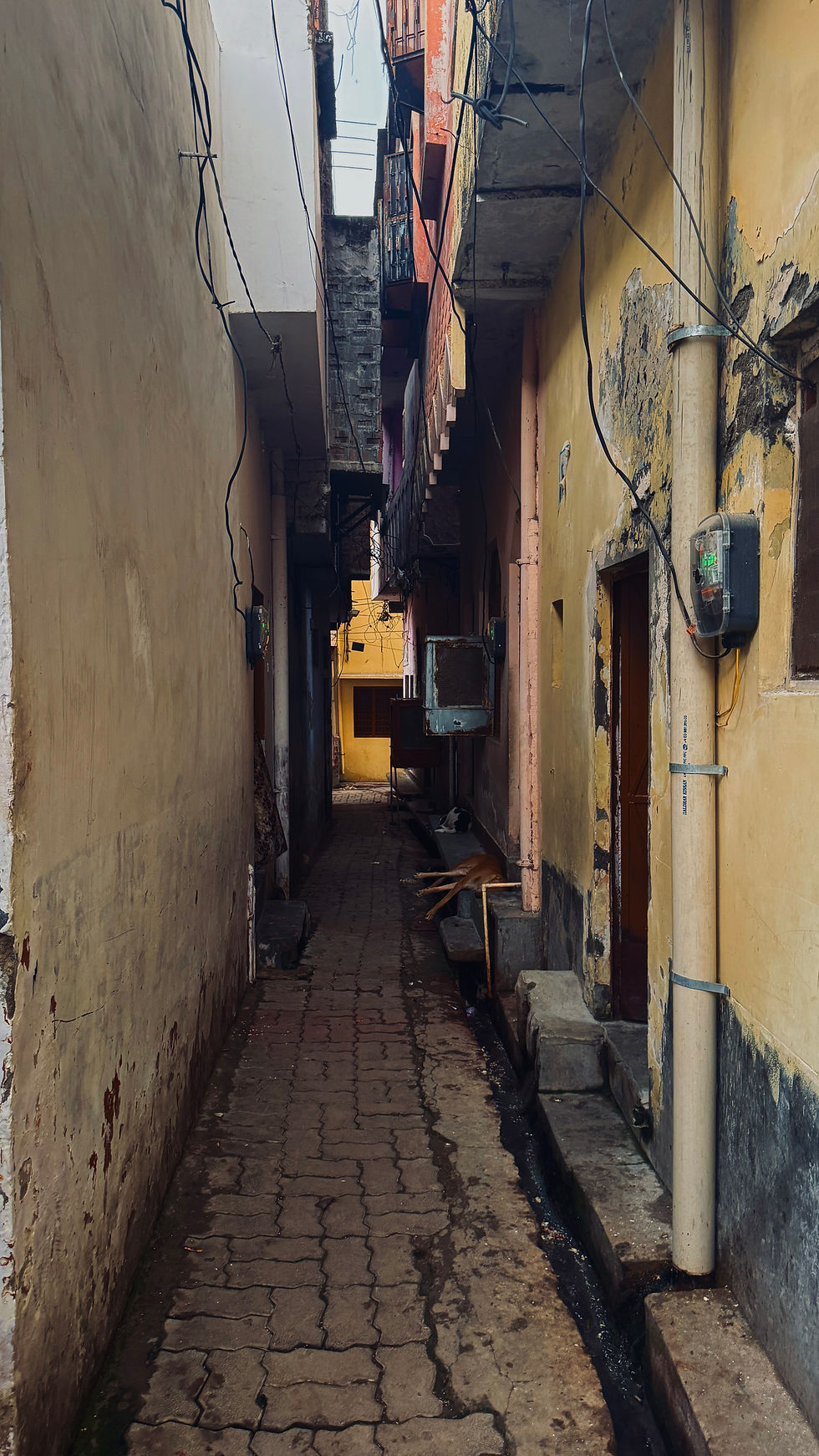An Ode to Purana Lucknow, the Pulse that Keeps the City’s Culture Alive
- sanskriti16maurya
- Jun 5, 2024
- 3 min read
Walking among the streets of old Lucknow was an experience like no other. It almost felt like I had stepped into a world of its own, completely away from the hustle-bustle of the modern city. Time had come to a stand-still and nobody was in a rush to get anywhere or worry about being late to some cold, corporate meeting.
A cricket match, one that would give the IPL a run for its money, was in full commencement and an argument about whether or not that swing was a six was the first thing I noticed as I stepped into the haven that is endearingly known as “Purana Lucknow”. Well, that and goats. Baby goats and old goats, feeding on a little patch of grass in the corner, hurriedly rushing off to find the grass that was greener on this side of the world. Even the smell of dung fit in perfectly into the landscape, only adding character to the realm that I found myself in.

I always had a fascination with the Urdu language, the way it dipped and curved, more art than language. But it was slowly losing its popularity as fewer and fewer people became accustomed to using it, finding the convenience of English and Hindi much more preferable. But not here. In Old Lucknow, people took pride in their mother tongue and displayed it on every board and hoarding possible. What a nice surprise it was to see the local high school proudly displaying its name in letters that curved and looped.

Every nook and cranny was brimming with life. Every window you peeped into, every door slightly ajar gave a glimpse into a life that belonged uniquely to the residents of this neighbourhood. Through a raggedy brown door, I saw zardozi and chikan workers meticulously stitching together an emerald saari that would be adorned by some socialite at a high-end event, but for now, it belonged to these streets, to the history that shapes it and the very same history that gives it the exorbitant price tag.
A grilled window acted as a frame for a woman bent over the kitchen counter, painstakingly kneading dough for the night’s meal as her infant son sat on the floor with nothing but the specs of dust to entertain himself.
In some faraway house, I could hear children arguing over who could have the television remote and who had to succumb to defeat.
Every inconspicuous look into any nook and cranny that I could find whispered secrets about what it was like to live here, how calm and serene and maybe a little difficult.

The narrow streets with their water damage, and half-finished paint jobs may have been an indication of paucity, but to me, even these hallowed walls echoed century-old stories they had witnessed. Stories of love and loss and everything that came in between. Everything from the paan-covered walls to the bright green-coloured houses was like the perfect movie montage playing a reel of the Lucknow that used to be known as the shaayar’s jannat”.
The crying of a 5-year-old who just got scolded, the chirping of the birds, the quiet discussions about the chikankari and the loud arguments about “kitne over baaki hai” served as the background music that completed the cinematic masterpiece that was this city.

I never felt very connected to Lucknow, and never really got to explore the cultural hub that I had the privilege of being born in. But walking among those streets was like discovering a sliver of the culture and heritage that seemed to be hidden yet so obvious. All I needed was the right address, and the right vision to discover the city that lay right in front of my sight all my life. And now that I have finally discovered it, I can’t seem to stop.



Comments